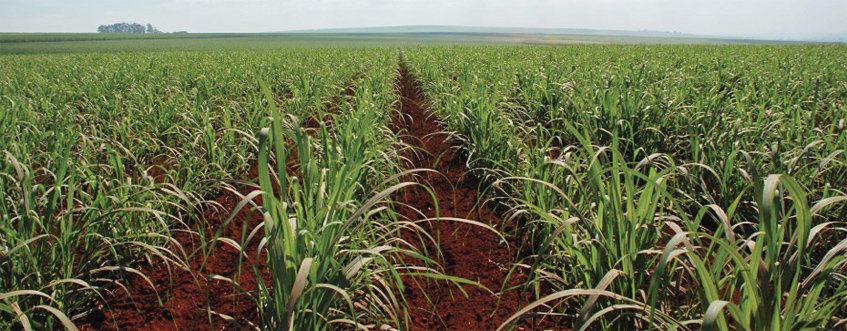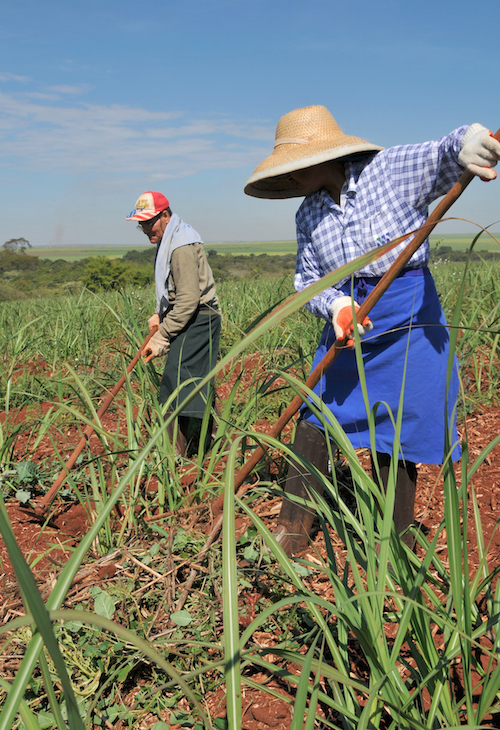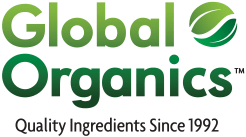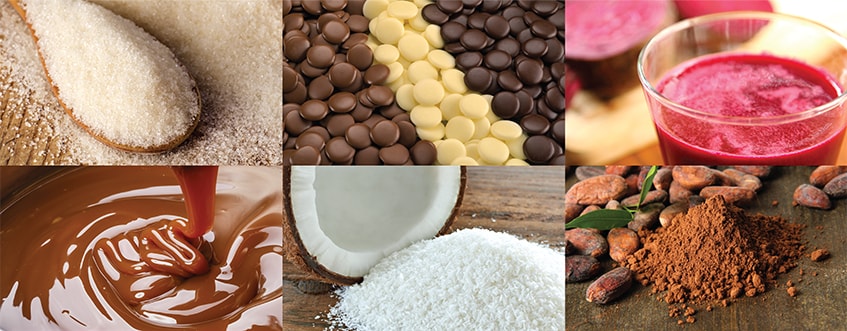True Cost of Food: Embracing Sustainable Sourcing
01.20.2017 | Author: Global Organics | Category: Organic & Sustainability
Let’s say you’re a buyer in a large company in the food industry. You’ve heard the industry buzzwords lately – “sustainability” “authenticity” “transparency” and you have just started trying to incorporate it into your business practices. Right now, you’re looking for a new source for sugar. You have a few directions you could go: U.S. conventional beet sugar, U.S. conventional cane sugar or imported organic cane sugar. Which is the best choice?
The beet sugar source you selected is cheap but produced with genetically modified (GMO) sugar beets and your consumers are wary of GMOs. GMO agriculture has been linked with biodiversity loss and increased pest and weed resistance, which leads to increased agrochemical use. These synthetic chemical inputs have been linked to a decline in pollinator populations, water contamination due to runoff and negative health effects on farm workers.
The source for conventional cane sugar you found also won’t break the budget but it is harvested by burning cane fields to remove the outer leaves of the cane stalk. Burning fields depletes soil nutrients, requires enormous amounts of water to wash cane stalks before processing, and also presents a public health hazard to farm workers and surrounding communities due to air pollution. Conventional sugar cane also uses a high amount of inputs like pesticides and fertilizers, again harming pollinators and polluting waterways.
 The source you identified for organic cane sugar is more expensive and you don’t necessarily need certified organic sugar. However, it comes from a carbon neutral project that harvests mechanically (no burning). This project has worked for years to build up soil fertility, improve biodiversity and preserve groundwater quality and volume. They even generate enough surplus renewable energy to power a city of 500,000 people. They also pay a living wage and have a long list of worker benefits like health insurance, training and profit sharing.
The source you identified for organic cane sugar is more expensive and you don’t necessarily need certified organic sugar. However, it comes from a carbon neutral project that harvests mechanically (no burning). This project has worked for years to build up soil fertility, improve biodiversity and preserve groundwater quality and volume. They even generate enough surplus renewable energy to power a city of 500,000 people. They also pay a living wage and have a long list of worker benefits like health insurance, training and profit sharing.
Which sugar source should you choose? Are the big picture benefits to workers, the environment and public health enough to justify the higher price of organic sugar when you have your own bottom line to uphold?
Thinking about sourcing ingredients this way (instead of making decisions strictly on price per pound), applies the concept of true cost accounting, which is “a system of financial accountability that ensures that the true costs and benefits of different production systems are accounted for” (Sustainable Food Trust).
All human activities have negative and positive impacts, or costs and benefits. It’s difficult to estimate the total costs of any one system of production, including food systems. This requires taking a step back and looking at the entire supply chain. What are all of the impacts from start (seed) to finish (selling the product)?
It’s easy to calculate the cost of physical inputs like seeds and labor but other costs are harder to see. There are hidden costs called “externalized costs,” or costs/impacts that are overlooked, invisible or pushed outside of the system, and therefore not captured in the price of the product. True cost accounting is a way to discuss the often hidden costs of production so we can truly compare products in our food system beyond just the dollars and cents price. It assigns monetary values to things like environmental degradation and carbon sequestration to come up with a dollar figure.
There are high costs associated with many “cheap” foods in our food system including unrecognized impacts on…
- The environment (on the climate, water, soil and biodiversity and from pollution from fertilizers and pesticides)
- Society and communities (such as wages lower than the living wage, and the poverty trap from which farmers cannot escape)
- Human health (including untreatable infectious diseases due to antibiotic resistance, and the rise in diabetes, cancer, allergies, and other health problems)
(Civil Eats)
Think of a hamburger on the dollar menu at your local fast food chain. How can $1 cover the cost of raising the cow for the meat, growing and harvesting the lettuce, manufacturing the bun, shipping all of the ingredients to the location and paying for an employee to put it together for you at the drive thru window? The consumer isn’t paying for the true cost of that hamburger. So who is?
We pay with our tax dollars to clean industrial pollution. We pay for health problems like asthma and cancer that are linked to pollution or unsafe working conditions. We pay taxes for social services to cover workers in jobs that don’t pay enough to support their families. We pay with the loss of jobs when production moves overseas in search of cheaper labor. When you look at the big picture and take the externalized costs back into account, the cost of our “cheap” food actually outweighs the benefits.
A system where externalized costs are passed along to others is not sustainable. If, as an industry, we’re serious about combatting issues like climate change or feeding an increasing population, we need to take these externalized costs back into account. Continuing down this road will only increase the burden on taxpayers, the environment and public health.
Luckily, there is a shift beginning in the market. Consumers still make purchase decisions primarily on taste and price but there’s growing interest in learning where food comes from and how it’s produced. Consumers have noticed the price differences and ask, “why are sustainable options more expensive?” They cost more because they more accurately reflect the true costs of production. With that should come the question – why is the rest so cheap?
 This brings us back to the initial sugar example. The question is not really organic vs. conventional vs. GMO sugar. Instead, it’s about which ingredient has the lowest true cost? Considering the cost of soil degradation, greenhouse gas emissions, water pollution from runoff, etc. you see that while the beet and conventional cane sugar appear to be cheaper, that price doesn’t cover the true cost. They are actually more costly to people, health and the environment than the organic cane sugar.
This brings us back to the initial sugar example. The question is not really organic vs. conventional vs. GMO sugar. Instead, it’s about which ingredient has the lowest true cost? Considering the cost of soil degradation, greenhouse gas emissions, water pollution from runoff, etc. you see that while the beet and conventional cane sugar appear to be cheaper, that price doesn’t cover the true cost. They are actually more costly to people, health and the environment than the organic cane sugar.
By considering true costs when making purchasing decisions, food companies and industry professionals can become agents of change. You don’t have to do an economic assessment to draw some conclusions. Just by looking into the sourcing story behind your ingredients, you can make a judgment as to whether they’re sustainable and whether you’re willing to pay for that sustainability. Many companies have already started doing this and communicating their sourcing practices to their customers. In doing so, they’re building consumer loyalty, increasing trust and helping consumers choose the more sustainable product over a cheaper option.
The future of sustainable agriculture has the potential to improve food security, employment and climate change. As a part of the food industry, you can make a difference by considering true cost and looking for more sustainable ingredients for your products.

